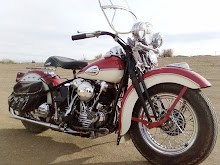My solution: what I found worked so well and was so simple everyone with an aluminum roof should just do it. The first step if to "sheet" the entire roof with 1/2" O.S.B. plywood screwed right screwed right through the old stuff to the rafters. The rafters are easy to find. They are the only firm spots on the roof and the only places you want to step on an aluminum roof! Once this is done, you will have found you can now walk without fear! Note - be sure every sheet starts and ends on a rafter! It is also wise to stagger the sheets. For instance, the first row starts with a full (8') sheet and the second row starts with a half (4') sheet. Keep your cuts nice and tight around vents.
Second step. In this example we will be using rolled roofing due to a roof that is too flat to use shingles. Now on to the roofing felt. Starting at the low side of your roof, (all roofing is installed starting at the bottom and working uphill), unroll the felt keeping it straight as possible using a staple hammer to tack it down, BUT as you go, use some roofing cement to glue the felt down. In windy areas I do a 100% glue down on the felt as well as the rolled roofing. My roofing stays put! With any roofing, remember as water goes downhill it runs off the edge of one piece of roofing onto the next. Never from one piece into the edge of the next.
Step three, after all the felt is down and your hands and shoes are sticking to everything, now we are having fun. Time to install the drip edge all the way around using roofing nails or (in windy areas) screws spaced every 12". After the drip edge is down it is best to use a "starter edge" for your rolled roofing. You can use an 8" wide strip of 30 lb felt for the leading edge of your roof. It's important that this is done well because this is where the wind wants to peel the roof off. In areas with very strong winds I will even give the O.S.B. plywood a 1 1/2" overhang and put the drip edge on last over the edge of the rolled roofing, using screws. This leaves exposed screws around the edge but it really holds the edge of the roof down.
At last, your final step - the roofing. Get out the roofing cement and the throwaway roller again. You probably noticed that you go through a lot of that goo. This is why it ends up cheaper to use shingles, but only if you have a roof that has a slope greater than 3-12.
Unroll your first few pieces of roofing and lay them in the sun. if you don't, you will have a pile of problems when your roof gets warm and the edges all wrinkle up. Ok, fine. Ask me how I know this. Live and learn. On this you just learned from mistakes made by someone else! Far less painful, isn't it? Now, again starting downhill mop out the sticky stuff (keep your feet out of it) and position your first piece with the black unsanded strip uphill. That is the nailing edge and the only place you put nails. Nail every 6"-8".
The second piece of roofing will cover the black "nail strip" and nails, so mop down the sticky stuff (I thought I told ya to keep your feet out of it) up to the edge of the sand on the first piece. Remember, the rolled roofing is primarily glued down. Any exposed nails will leak someday. No nails. Remember, exposed nails = future leaks. Now seal around the vents and get back to the ground again (if your're not glued down).
Here are some pictures and drawings to help:






~SJN

No comments:
Post a Comment